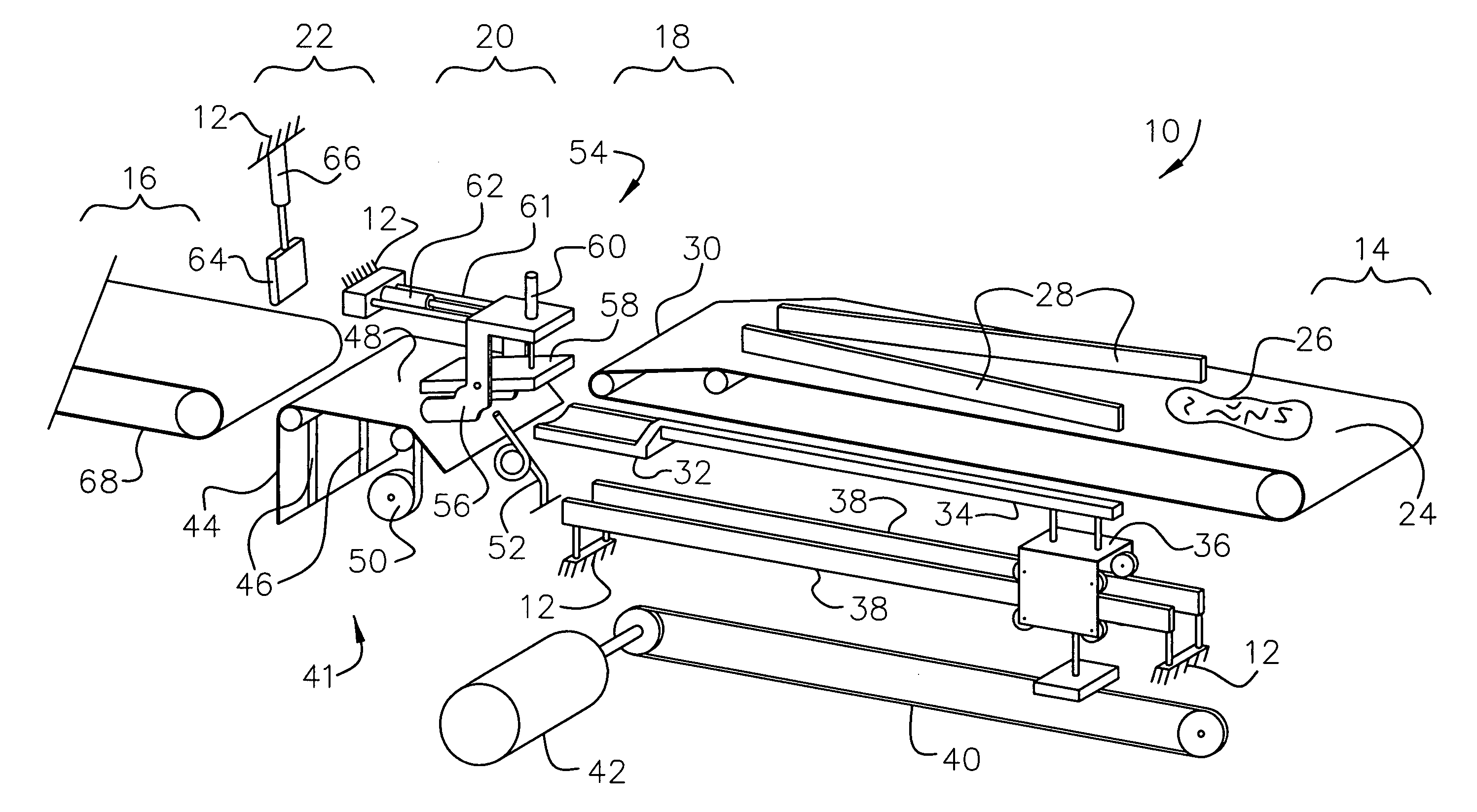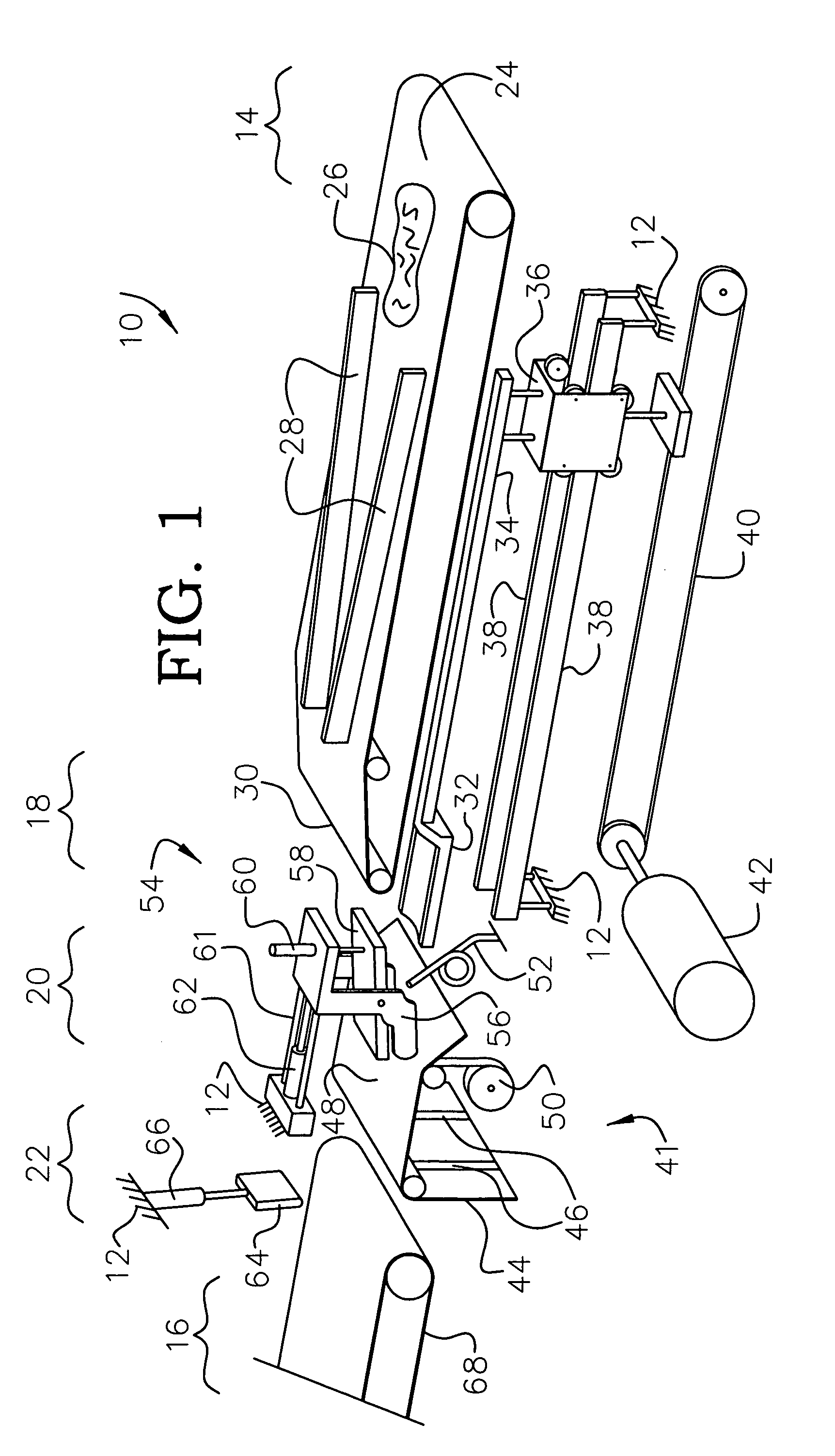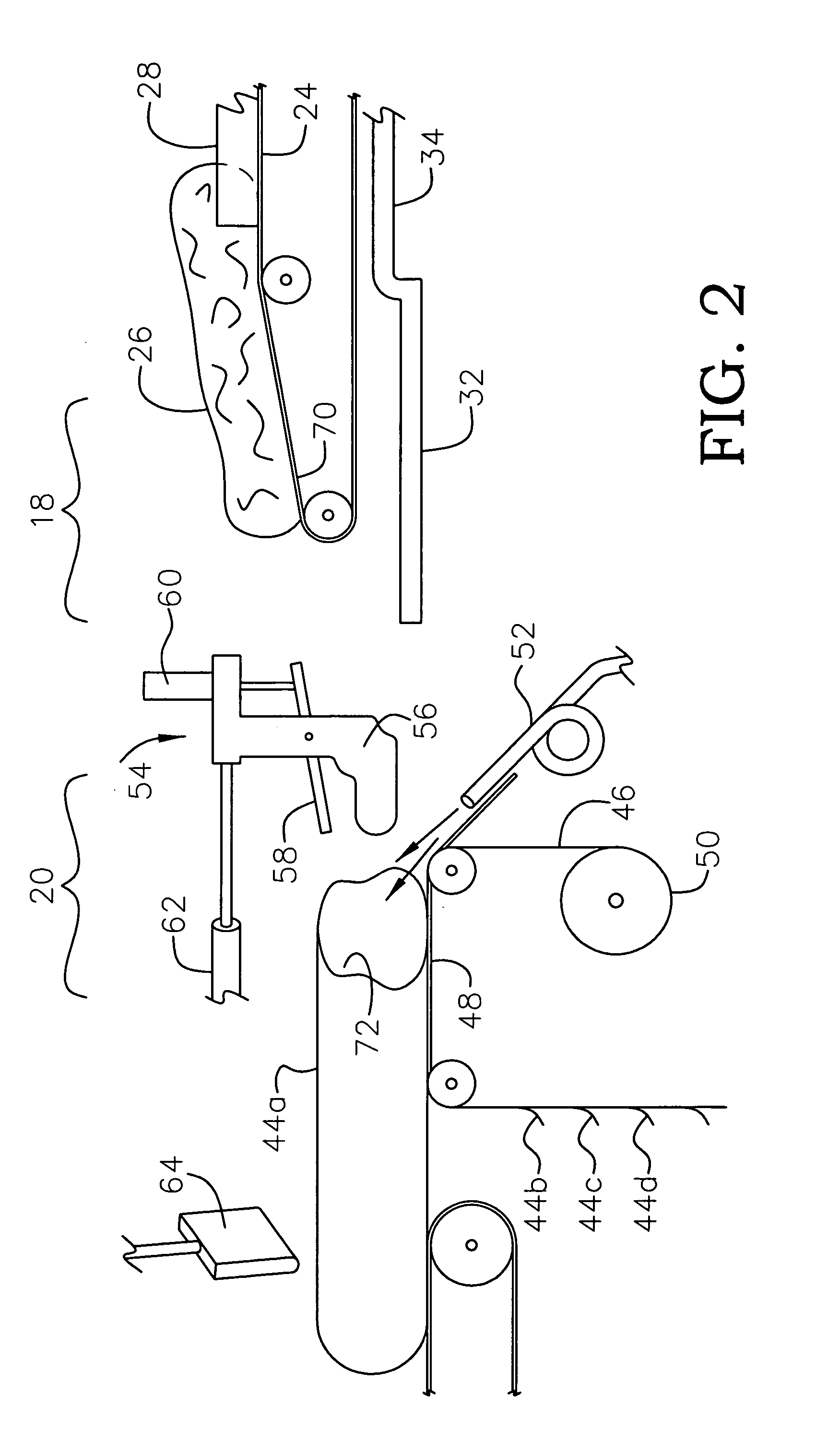Food article packaging apparatus and method
a technology for packaging food articles and food articles, which is applied in the field of packaging apparatus and method for packaging food articles, can solve the problems of difficult packaging of meat cuts, particularly difficult for food articles, and relatively flaky cuts of meat, so as to reduce the likelihood of dropping either a bag or a bag. , the effect of increasing productivity
- Summary
- Abstract
- Description
- Claims
- Application Information
AI Technical Summary
Benefits of technology
Problems solved by technology
Method used
Image
Examples
Embodiment Construction
[0035] Referring to the drawings, FIG. 1 shows the apparatus of the present invention generally indicated at 10. The apparatus includes a frame, portions of which are shown at 12. The frame is arranged along an elongated axis from an inlet end 14 to an outlet end 16 and includes an upstream product receiving station 18, an intermediate bag loading station 20 and a downstream product delivery station 22.
[0036] Disposed on the frame is an infeed conveyor 24 arranged to deliver a food article 26 to the receiving station 18. The food article is an elongated flaccid muscle such as a boneless pork loin, beef tenderloin or the like,
[0037] Associated with the conveyor are elongated upright product guides 28 that extend in the conveyor direction. The guides 28 are spaced apart and converge towards the receiving station 18. Accordingly, an elongated food article 26 on the conveyor and feeding into the space between the guides, while in transit, assumes an axial alignment relative to the lon...
PUM
| Property | Measurement | Unit |
|---|---|---|
| flexible | aaaaa | aaaaa |
| dimension | aaaaa | aaaaa |
| speed | aaaaa | aaaaa |
Abstract
Description
Claims
Application Information
 Login to View More
Login to View More - R&D
- Intellectual Property
- Life Sciences
- Materials
- Tech Scout
- Unparalleled Data Quality
- Higher Quality Content
- 60% Fewer Hallucinations
Browse by: Latest US Patents, China's latest patents, Technical Efficacy Thesaurus, Application Domain, Technology Topic, Popular Technical Reports.
© 2025 PatSnap. All rights reserved.Legal|Privacy policy|Modern Slavery Act Transparency Statement|Sitemap|About US| Contact US: help@patsnap.com



